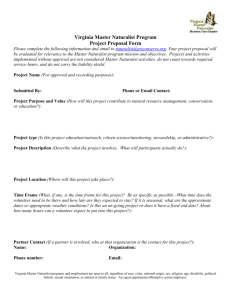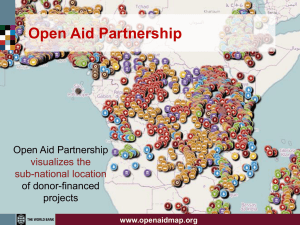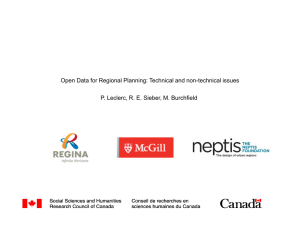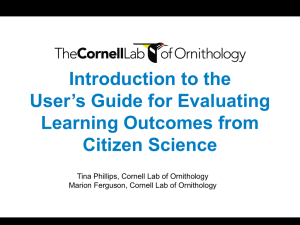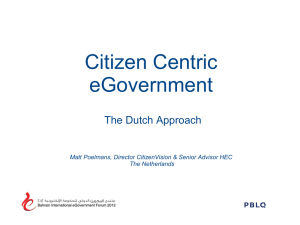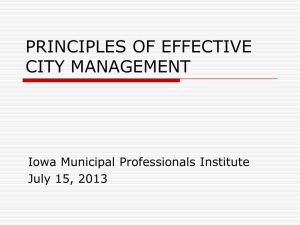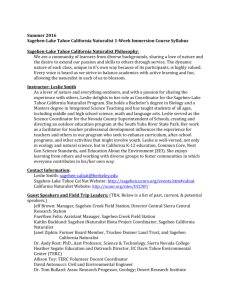Citizen Science and Master Naturalists
advertisement
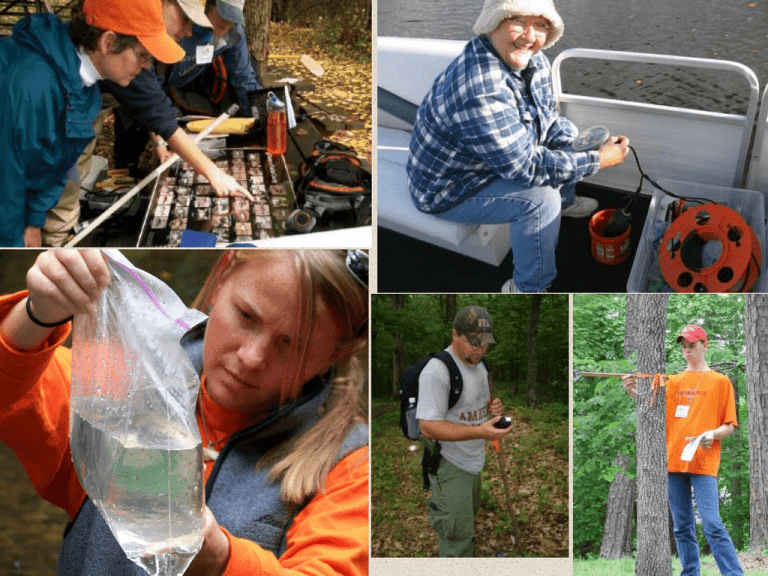
Master Naturalists and Citizen Science: Building a well-trained volunteer corps Michelle M. Haggerty Texas Master Naturalist State Program Coordinator Texas Parks & Wildlife Department and ANROSP President What is Citizen Science? Citizen Science is: • Data collection projects that are designed to answer a specific scientific question. o Projects can happen at any scale—local, state, national, continental o Projects generally take place over the long term tracking trends/changes over time – E.g. - How populations change distribution over time and space – E.g. - How emerging disease and pests spread through populations – E.g. - How environmental changes affect species physically Citizen Science involves two groups • The sponsoring organization who: o o o o Develops the project and data collection protocol Provides training and support where needed Collects and analyzes data submitted Publishes the results in scientific journals and publications • The citizen volunteer who: o Collects and submits the data Benefits of Citizen Science Engages a larger, more diverse audience Gets people outdoors, involved and concerned about natural resources Cultivates awareness which improves science literacy Provides professionals with richer, more abundant data sets Allows projects/programs to collect data on such a large scale that efforts could never be matched by research teams Provides a tool for grassroots participation in government and policy making Master Naturalist Programs Continuing education for adults Natural resource, natural history, and science focused Service-oriented In-depth Typically run by state agencies Community-based Also called Volunteer Naturalists, Conservation Stewards, Coverts, etc. A Master Naturalist Movement with a National Scale Master Naturalist-type Programs in at least 28 states (AR, AZ, CA, CO, DE, FL, GA, IA, ID, IL, IN, MI, MD, MN, MO, MS, NE, NJ, OH, OK, OR, SC, TX, TN, UT, VA, WI, WV) Some programs are local, others statewide Many additional programs in development (HI, PA, NM, for example) Connected through Alliance of Natural Resource Outreach and Service Programs (ANROSP) Master Naturalist Certification Basic Training + Advanced Training + Volunteer Service = Certified Master Naturalist Master Naturalist Training 25-50 hours Classroom components Field and handson sessions Taught by college faculty, state agency staff, and other local natural resource experts and educators Topics Covered -ologies • Botany • Herpetology • Ornithology • Entomology • Ichthyology • Mammalogy • Dendrology Ecology and management of systems (e.g. wetlands, forests, estuaries, streams) Naturalist skills Basic principles of ecology Core Citizen Science Topics Nature of science, scientific process Types of scientific studies Components of a good citizen science project Awareness of citizen science opportunities Core Citizen Science Skills Keeping a field notebook Proper recording of observations Using keys to identify organisms Using field guides Common methods used to study different types of organisms Observation Familiarity with local environment and natural areas Advanced Training Continuing education hours ~8-12 required annually Opportunity to focus interest and gain additional skills Targeted at programs in need of skilled, trained volunteers Volunteer Service ~25-50 hours required annually Typically done within the local community 3 types of projects • Education • Stewardship • Citizen science Volunteering: Citizen Science Diversity of projects • Local to national • Scientist to community-driven • Monitoring, inventory, and experimental research Master Naturalist Program Outcomes Thousands of volunteers trained • 5300 in Texas over 10 years • 900 in Virginia over 3 years • 500 in Minnesota over 3 years Multiple evaluations conducted by individual programs have shown that course training is effective in changing participants’ knowledge and attitudes. Thousands of service hours provided • E.g. 1.03 Million hours of service by Texas Master Naturalist volunteers Widening community impact • In just one year, Texas Master Naturalists reached 175,000 youth, adults, and private landowners, engaged in projects on 90,000 acres of habitat, and developed and maintained 1,000 miles of interpretative trails. Why Partner with Master Naturalists? Ready pool of trained volunteers Geographically well distributed Leaders with initiative Existing lines of communication and infrastructure Strong community connections Ability to build partnerships (e.g. 4H, public lands) Volunteer retention How to Partner with Master Naturalist Programs… Alliance of Natural Resource Outreach & Service Programs goals: To provide leadership- information- and resources to support the establishment and expansion of member programs nationally and internationally. To serve as the primary nexus of information about natural resource outreach and service programs for natural resource professionals- volunteers- and interested citizens. To increase knowledge of best practices for natural resource outreach and service programs and encourage their adoption. To build effective program partnerships and collaborations at the local- state- and national levels. Acknowledgements Alliance of Natural Resource Outreach and Service Programs (ANROSP) • www.anrosp.org Thank you--Michelle Prysby, Virginia Master Naturalist Program Coordinator My Contact info: Michelle Haggerty, ANROSP President and Texas Master Naturalist Program Coordinator • • Texas Parks & Wildlife Department 309 Sidney Baker South Kerrville, TX 78028 830-896-2504 mhaggerty@ag.tamu.edu
